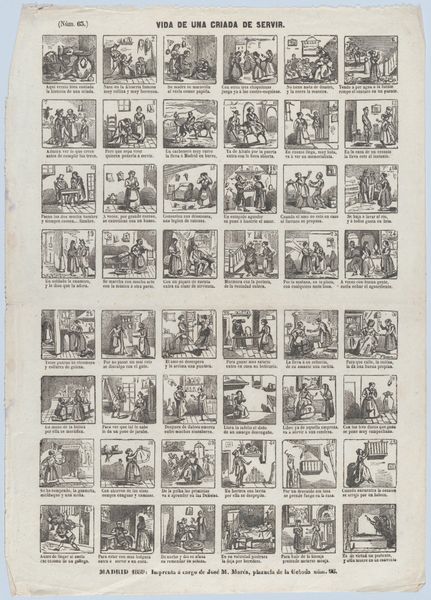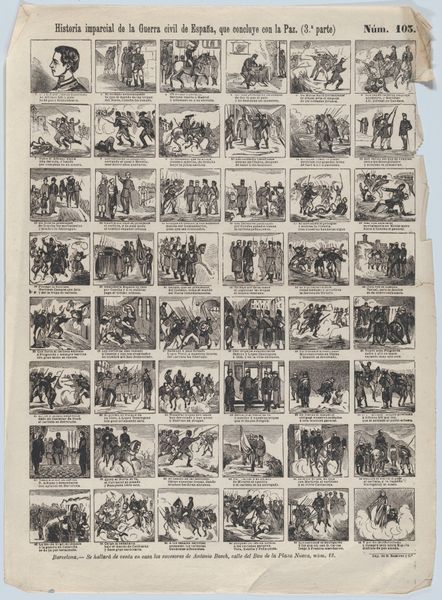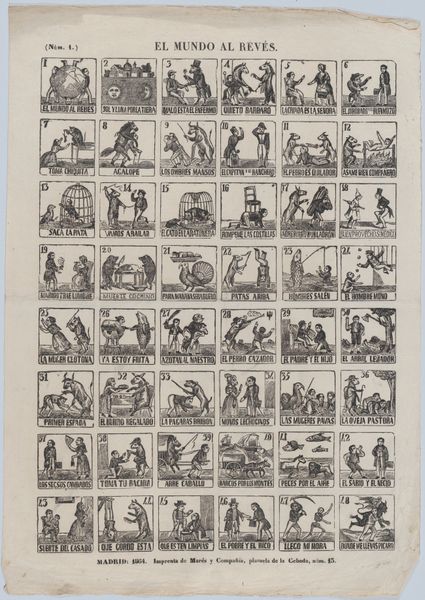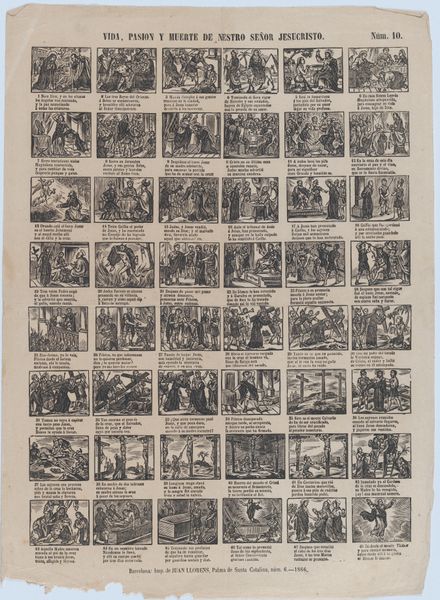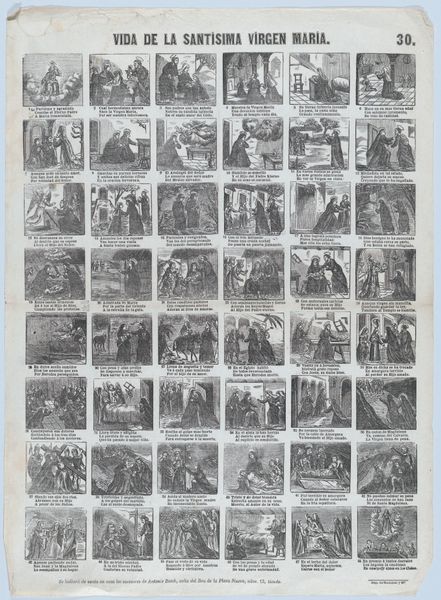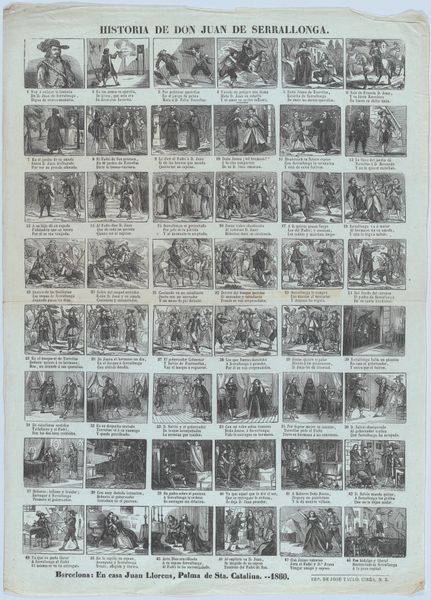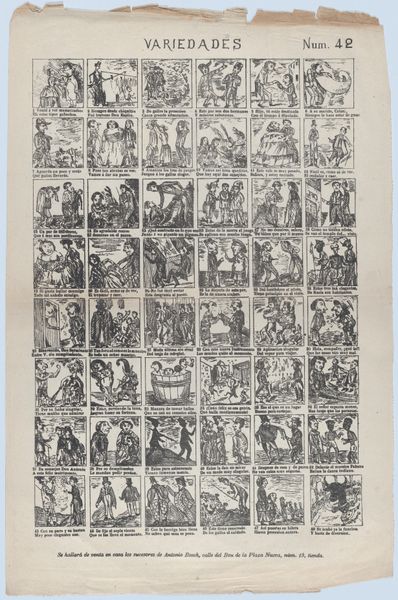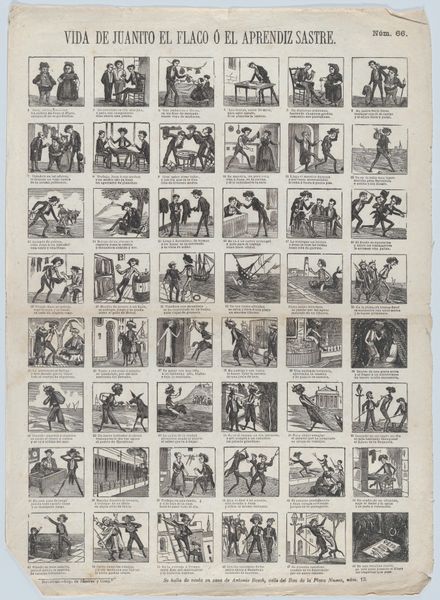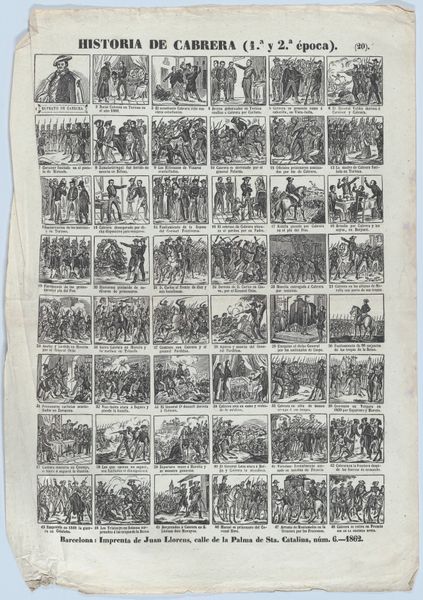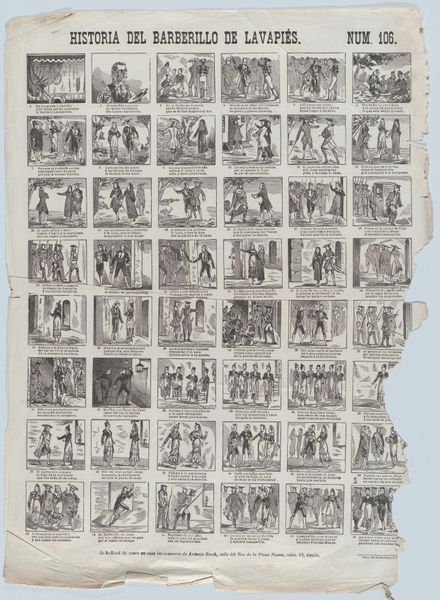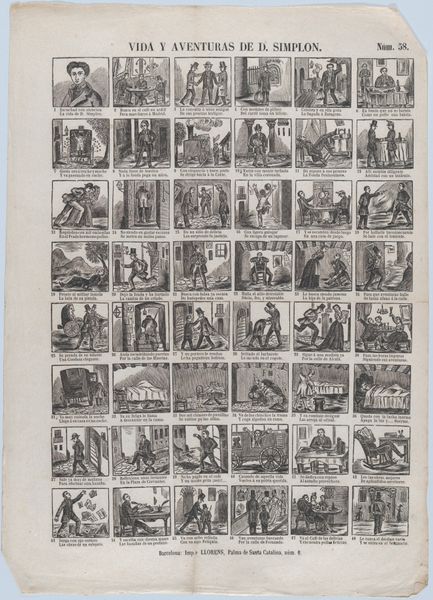
Broadside with 48 scenes relating to the Spanish army 1861
0:00
0:00
drawing, print, paper
#
drawing
#
weapon
# print
#
paper
#
horse
#
men
#
genre-painting
#
history-painting
#
academic-art
#
watercolor
Dimensions: Sheet: 17 11/16 × 12 5/8 in. (45 × 32 cm)
Copyright: Public Domain
Curator: Here we have "Broadside with 48 scenes relating to the Spanish army," created in 1861 by Juan Llorens. The print, a drawing on paper, is part of the collection at the Metropolitan Museum of Art. What is your initial take on this piece? Editor: The immediate impression is of a highly structured, almost regimented grid. The monochromatic palette lends a seriousness, perhaps even a somberness, to the depiction of military life. There’s a staccato rhythm established by the 48 distinct vignettes. Curator: The regimented grid reflects the hierarchical organization of the Spanish army during that era. Each scene encapsulates a different aspect of military life, and Llorens doesn’t shy away from displaying all roles, high ranking, low ranking, in different locations, facing varied social situations. It acts as a commentary, illustrating the far reaching, and even intrusive impact the military had on Spanish society. Editor: I am intrigued by the lines that delineate each scene; are those meant to suggest the border between realities? As in, one moment here depicted on the lower left vs another moment there in the top right of the frame? Curator: Yes! Furthermore, this visual segmentation draws a parallel between military bureaucracy and Spanish society during the mid-19th century. I like to contextualize Llorens' work by examining the era in which it was conceived - the period of political instability and social upheaval - noting the constant shifts in power reflected on its rigid structuring, with those abrupt juxtapositions you identified, Editor. Editor: The repetition is a key element. While each scene seems self-contained, together they contribute to an overarching feeling of continuous military activity, a reminder perhaps of an all-encompassing system and process. Do you consider this commentary a critique or an endorsement of Spanish Military might? Curator: I view it as a more nuanced, even ambiguous, portrait of the Spanish military’s position in a rapidly changing nation. It’s simultaneously an almost ethnographic documentation of daily life and a subtle interrogation of its social impact during political instabilities. Editor: Agreed, perhaps the rigidity is neither celebratory nor condemnatory, but more akin to semiotic encoding of Spain’s sociopolitical state and evolving role definitions during Juan Llorens' lifetime and historical events. I value seeing the rigid presentation against the fluid and organic medium of paper drawing! Curator: I would concur that the piece doesn't lean solely one way, as there's much to explore that challenges a singular message.
Comments
No comments
Be the first to comment and join the conversation on the ultimate creative platform.
